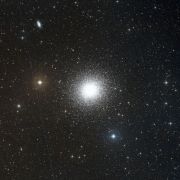|
Advertisement / Annons: |
Astronomy Science data |
Content: |
POSS-II dataPOSS-II data is a follow up of the earlier POSS-I data. This was performed the years 1985 to 2000. Now they also added an IR channel, still film based. One of its purposes was to serve the Hubble Space Telescope with a guide star catalog. It looks to be the same size of the photographic plates, 355 mm x 355 mm dimension. As I did earlier I made a green channel from the red and blue spectra. But also did some experiment to use the IR channel. |
Mount Palomar's Samuel Oschin TelescopeFrom where did these POSS-II data came from? Same telescope as earlier, but now upgraded in some parts, you can get more information here: Below you see what images I have processed, click on the images and get more information: |
|||
 |
 |
 |
 |
| Messier 1 Crab Nebula |
Messier 13 Hercules Globular Cluster |
Messier 31 Andromeda Galaxy |
Messier 42 Orion Nebula |
 |
|||
| Messier 45 Pleiades |
|||
| Images from POSS-I plates, credits: STScI Image processing by Lars Karlsson |
|||
Conclusion:The dynamic range is better with the POSS-II data compared with the older POSS-I data. With POSS-II data there not only red and blue spectra, there are also IR spectra. Very handy to use when searching after strong IR radiation objects. |
| Go Back to content |
| Go Back |